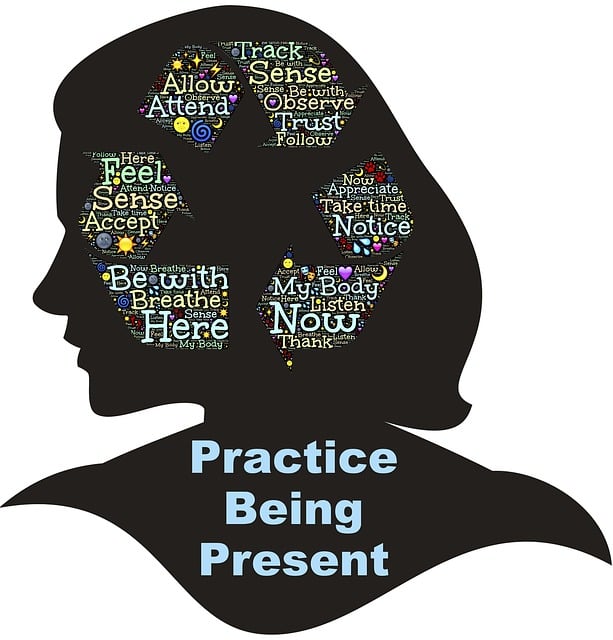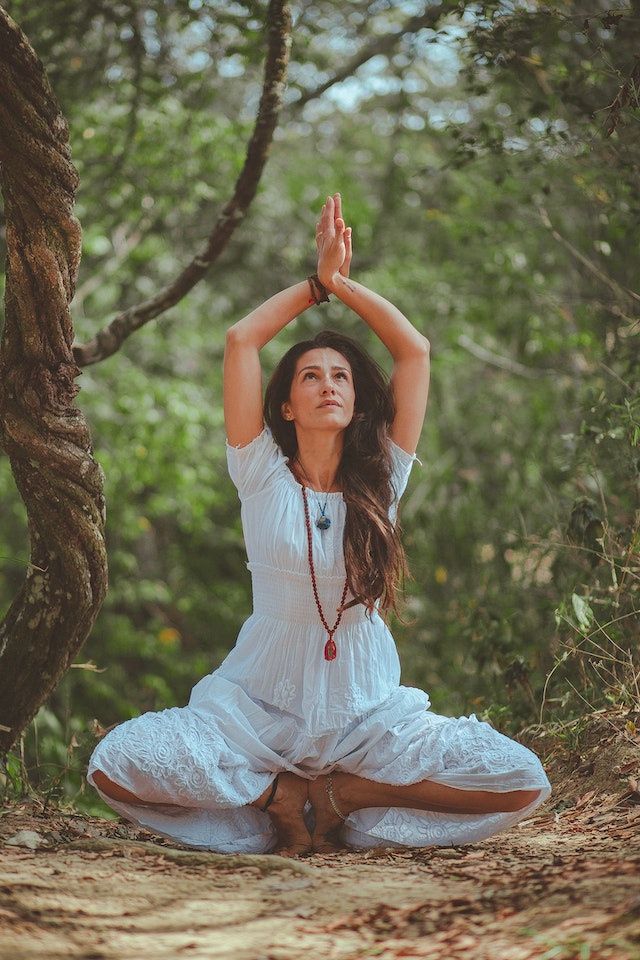
The Art of Mindful Living: 7 Exercises to Cultivate a More Peaceful and Joyful Life
Mindful living is a way of being fully present at the moment, cultivating a deep awareness of our thoughts, emotions, and surroundings. It is a practice that can greatly enhance our overall well-being and contribute to a more peaceful and joyful life.
Mindfulness is not a new concept. It has been part of ancient wisdom traditions for centuries, but in recent years, it has gained significant recognition for its profound impact on mental, emotional, and physical well-being.
Mindfulness helps us cultivate a heightened sense of self-awareness. We become more attuned to our thoughts, emotions, and physical sensations, enabling us to respond to them with greater clarity and compassion.
As we develop this self-awareness, we can also gain valuable insights into our patterns, habits, and automatic reactions, thereby opening the door to personal growth and transformation.
Mindful living paves the way for a more peaceful and joyful existence.
By consciously paying attention to the present moment, we free ourselves from dwelling on the regrets of the past or anxieties about the future.
This shift in perspective allows us to fully immerse ourselves in the richness of each experience, finding beauty in the ordinary and discovering moments of joy and gratitude that might have otherwise passed us by.
Let’s delve deeper into each exercise and explore how it can be incorporated into your daily life to cultivate a more peaceful and joyful existence.
Exercise 1: Mindful Breathing
One of the fundamental exercises in mindfulness is mindful breathing. It is a simple yet powerful technique that can be practiced anytime, anywhere. Mindful breathing involves bringing our attention to the sensation of our breath and using it as an anchor to the present moment.
To practice mindful breathing, find a comfortable position and close your eyes, if that feels comfortable for you. Take a few deep breaths, inhaling deeply through your nose and exhaling slowly through your mouth. Then, allow your breath to return to its natural rhythm.
Focus your attention on the sensation of your breath entering and leaving your body. Notice the coolness of the inhale and the warmth of the exhale. Observe the rising and falling of your abdomen or the feeling of air passing through your nostrils.
If your mind begins to wander, gently redirect your attention back to your breath. Be kind to yourself and embrace each moment as an opportunity to return to the present.
Engage in mindful breathing for a few minutes each day to cultivate a sense of calm, clarity, and presence.
Incorporating mindful breathing into your daily routine can bring about numerous benefits.
It helps to reduce stress, relax the body and mind, and promote a sense of inner peace. Mindful breathing also enhances focus, attention, and overall mental well-being.
Exercise 2: Body Scan Meditation
Body scan meditation is a practice that involves systematically bringing awareness to each part of the body, from head to toe. It helps us develop a deeper connection with our physical sensations and promotes relaxation, grounding, and self-care.
To begin a body scan meditation, find a comfortable position, either sitting or lying down. Close your eyes and bring your attention to your breath, allowing yourself to settle into the present moment.
Start by focusing your attention on the top of your head. Notice any sensations, tension, or areas of tightness. As you continue, slowly move your attention down through your body, bringing awareness to your forehead, eyes, cheeks, jaw, and neck. Pay attention to any areas of discomfort or relaxation.
Continue scanning your body, moving down to your shoulders, arms, hands, chest, and abdomen. Notice any sensations, warmth, or coolness in each area. Direct your attention to your back, hips, legs, and feet, observing any feelings of heaviness or lightness.
As you scan your body, allow any sensations or emotions to arise without judgment. If you notice any tension or discomfort, gently breathe into those areas, inviting a sense of relaxation and release.
Body scan meditation can be practiced for a few minutes or extended to a longer duration, depending on your preference. Regular practice can help you develop a greater awareness of your body, reduce tension and stress, and promote a sense of overall well-being.
Exercise 3: Mindful Eating
In our fast-paced world, mindful eating offers a powerful way to reconnect with our food, our bodies, and the present moment. It involves paying close attention to the entire experience of eating, from the moment the food arrives on our plate to the sensation of chewing and swallowing.
Mindful eating begins with cultivating awareness before even taking the first bite. Take a moment to observe the food in front of you, appreciating its colors, textures, and aromas. Express gratitude for the nourishment it provides.
As you start eating, chew slowly and savor each bite. Notice the flavors, textures, and sensations in your mouth. Pay attention to the process of chewing and the movement of your jaw.
Be fully present with the act of eating, engaging all your senses.
Avoid distractions while eating, such as watching TV or scrolling on your phone. Instead, create a peaceful and inviting environment. Sit at a table, set a pleasant ambiance, and eat with intention and focus. By being fully present, you can fully enjoy and appreciate your meal.
Mindful eating is not about strict rules or restrictions; it is about developing a healthier relationship with food and listening to your body’s signals of hunger and fullness.
It encourages non-judgmental awareness of your eating habits, emotions, and thoughts around food.
By practicing mindful eating, you can foster a deeper connection with your body, enhance your digestion, and make more conscious choices about what and how you eat. It can also help prevent overeating and promote a sense of satisfaction and fulfillment from your meals.
Exercise 4: Gratitude Practice
Gratitude is a powerful practice that can transform our perspective and cultivate joy in our lives. It involves intentionally recognizing and appreciating the positive aspects of our experiences, relationships, and surroundings.
Take a moment each day to reflect on the things you are grateful for. It can be as simple as a beautiful sunset, a supportive friend, or a moment of laughter. Write them down in a gratitude journal or simply mentally acknowledge them.
To deepen your gratitude practice, consider expressing your appreciation to others. Write a heartfelt note, have a sincere conversation, or perform acts of kindness to show your gratitude.
Engaging in these acts not only benefits others but also reinforces your own sense of gratitude and connection.
Another creative way to incorporate gratitude into your daily life is by creating a gratitude jar. Find a jar or container and decorate it if you wish.
Each day, write down something you are grateful for on a small piece of paper and place it in the jar. Over time, you will have a collection of positive moments and memories to reflect on.
By cultivating gratitude, we shift our focus from what may be lacking in our lives to the abundance that surrounds us. This practice rewires our brains to notice and appreciate the good, fostering a positive mindset and a greater sense of happiness and well-being.
Exercise 5: Mindful Movement (Yoga or Tai Chi)
Mindful movement practices such as yoga or Tai Chi offers a unique opportunity to integrate mindfulness into our physical movements. These practices combine breath, movement, and meditation, allowing us to cultivate presence, balance, and inner peace.
Yoga is a holistic practice that incorporates physical postures, breath control, and meditation. It promotes flexibility, strength, and body awareness. By focusing on the breath and the sensations in the body, yoga becomes a moving meditation that connects the mind, body, and spirit.
Tai Chi is an ancient Chinese martial art that emphasizes slow, deliberate movements, and deep breathing. It is known for its gracefully flowing sequences, which promote relaxation, balance, and harmony. Tai Chi cultivates a deep sense of presence and helps release tension and stress.
Engaging in mindful movement practices offers numerous benefits. It improves physical fitness, flexibility, and posture. It reduces stress, and anxiety, and promotes relaxation. The mindful movement also enhances body awareness, concentration, and overall well-being.
Choose the practice that resonates with you, whether it’s yoga or Tai Chi, and explore classes or online resources to learn the basics.
Start with gentle movements and gradually progress at your own pace. Remember, it’s not about perfection; it’s about the process and the mindful awareness you bring to your movements.
Exercise 6: Nature Connection
The healing power of nature is undeniable. Connecting with nature allows us to step away from the busyness of daily life and find solace in the beauty and tranquility of the natural world. It provides an opportunity to rejuvenate our minds, bodies, and souls.
Take the time to explore natural environments, whether it’s a local park, a forest, or a beach. Engage in mindful walking, paying attention to the sights, sounds, and sensations around you. Observe the trees, flowers, and wildlife with curiosity and wonder.
If you live in an urban environment, bring nature into your surroundings. Surround yourself with plants, create a small indoor garden, or even invest in nature-inspired artwork. Cultivate a sense of connection with the natural world in your daily life.
Activities such as hiking, gardening, or simply sitting in nature can foster a deeper sense of well-being. They offer a break from the constant stimulation of technology and provide an opportunity for reflection, grounding, and inner peace.
Exercise 7: Loving-Kindness Meditation
Loving-kindness Meditation, also known as Metta meditation, is a practice that cultivates feelings of love, compassion, and goodwill toward ourselves and others. It involves silently repeating specific phrases to evoke these emotions.
To practice loving-kindness meditation, find a quiet and comfortable space. Close your eyes and take a few deep breaths, allowing your body and mind to relax.
Start by directing loving-kindness towards yourself. Silently repeat phrases such as “May I be happy. May I be healthy? May I live with ease?” Feel the warmth and kindness radiating from your heart toward yourself.
Next, extend loving-kindness towards someone close to you, such as a loved one or a friend. Repeat phrases like “May you be happy. May you be healthy. May you live with ease.” Visualize them receiving your loving intentions.
Continue to expand your loving-kindness to include neutral people, difficult individuals, and eventually all beings. Silently repeat the phrases and generate a genuine sense of goodwill towards each person.
Loving-kindness Meditation helps cultivate empathy, compassion, and interconnectedness. It allows us to let go of judgment, anger, and resentment, fostering forgiveness and understanding.
Regular practice can transform our relationships, promote emotional well-being, and create a more harmonious world.
Conclusion
Incorporating mindfulness into our lives through the practice of these seven exercises can have profound effects on our overall well-being.
Mindful breathing, body scan meditation, mindful eating, gratitude practice, mindful movement, nature connection, and loving-kindness meditation all contribute to a more peaceful, joyful, and fulfilling existence.
Remember, the art of mindful living is a journey, and it’s important to approach it with patience and self-compassion.
Start by incorporating one or two exercises into your daily routine, and gradually expand from there. With consistent practice, you’ll begin to notice a positive shift in your overall well-being, experiencing more peace, joy, and fulfillment in your life.
Each day presents an opportunity for growth, self-discovery, and a deeper connection with yourself and the world around you. So, embrace the practice of living mindfully and start your transformational journey.


You May Also Like

A Delightful Rajasthani Experience at Shree Navratna Restaurant
18 July 2024
Karigari: Where Every Bite is an Experience
22 March 2024

